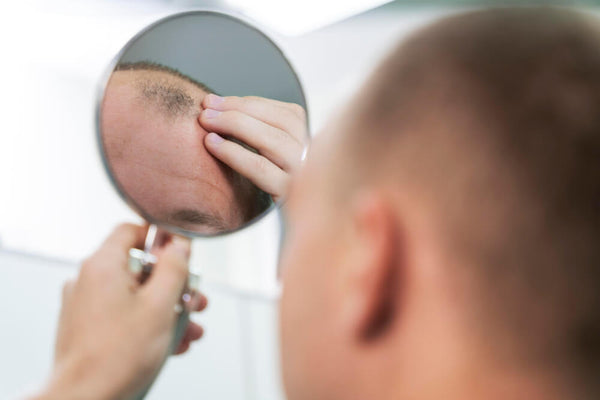I need to tell you about a woman who sat in my chair last week. She opened her bag and pulled out hundreds of dollars worth of hair growth products. "I've tried everything," she told me, her voice tired. "Why does nothing work for me?"
If you've ever felt this way, I would like to tell you one very important thing: it is not your fault. The reason is not that you aren't putting enough effort. The main issue with most hair loss treatments is that they are similar to using the wrong key in a lock - although they may seem correct, they will never open the door.
The majority of women simply symptomatically treat their hair loss without actually getting to the root of it.
Why Have Your Previous Hair Loss Treatments Failed?
I see this pattern every single day in my Atlanta clinic. Women come in frustrated because they've tried:
-
The special shampoos that promised thickness.
-
The growth oils that went viral on social media.
-
The vitamins that worked for their friend.
-
The expensive serums from the beauty store.
And yet, their hair keeps thinning. Here's the hard truth: if you're dealing with medical hair loss conditions like CCCA, traction alopecia, or hormonal thinning, these surface-level treatments can't reach the root of the problem.
It's like putting a bandage on a broken arm. It might cover the visible damage but it doesn't actually fix what's broken underneath.
How Do You Know What's Actually Causing Your Hair Loss?
This is the million-dollar question that most women never get answered. Your hair loss pattern tells a specific story if you know how to read it:
-
Thinning around your edges and hairline? That's usually traction alopecia from years of tight styles.
-
A widening part and general thinning all over? That's often hormonal or genetic pattern hair loss.
-
Bald spots or scarring at your crown? That could be CCCA needing immediate attention.
-
Sudden shedding all over? That's likely telogen effluvium from stress or health changes.
Until you know exactly what story your hair is telling, you're just guessing at treatments. And guessing is expensive, frustrating, and rarely effective.
What's the Difference Between Surface-Level and Medical-Grade Treatments?
Let me be completely honest with you: the products you buy at the beauty supply store and the treatments we use in our clinic exist in different worlds.
Over-the-counter products work on the surface. They can make your existing hair look nicer, feel softer, or appear thicker temporarily.
Medical treatments like PRP therapy and exosome therapy work beneath the surface. They communicate with your follicles at a cellular level, reducing inflammation, improving blood flow, and stimulating actual regeneration.
The women who see the best results in our clinic are the ones who understand this difference and stop expecting drugstore products to perform medical miracles.
When Should You Consider Advanced Hair Loss Treatments?
If you're noticing any of these signs, it's time to move beyond basic solutions:
-
Your part is noticeably wider than it was six months ago.
-
You're seeing more scalp around your edges and temples.
-
Your ponytail is significantly thinner.
-
You have scalp pain, itching, or inflammation.
-
The shedding hasn't slowed despite trying multiple products.
These aren't just appearance concerns - they indicate a deeper problem that needs a professional diagnosis and specific treatment.
Why Do Black Women Need Different Hair Loss Solutions?
This question is the reason why I cannot sleep at night: the majority of hair loss treatments have been created and tested on men with male pattern baldness. They don't account for the unique structure of our coiled hair follicles, conditions like CCCA that primarily affect Black women like us, the impact of cultural hair practices on our scalp health and also how medications absorb through our skin.
This is why we take a completely different approach in our practice. We understand that your hair journey is unique, and your treatment plan should be too.
What Does a Successful Hair Loss Treatment Plan Actually Look Like?
The women who get real results in our clinic are treated according to what their hair actually require to regrow properly. We don’t make any wild guesses with generic treatments.
-
Comprehensive Diagnosis - We first perform tests to understand your health and hair profile first.
-
Root Cause Treatment - We solve the real issues and reasons behind your hair loss.
-
Targeted Therapies - We use treatments that actually match your specific condition.
We always follow a strategic approach that actually works because it's built around your specific needs, not generic advice.
Ready To Revive Your Hair?
Stop wasting money on treatments that weren't designed for your hair loss cause. The reason nothing has worked yet might be simpler than you think: you haven't identified the real problem.
Book your $99 Hair Therapy Evaluation at Nina Ross Hair Therapy and let's finally figure out what's actually happening with your hair - and create a plan that actually works for you.














